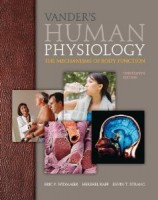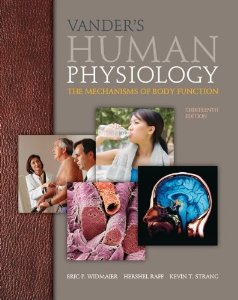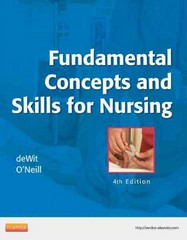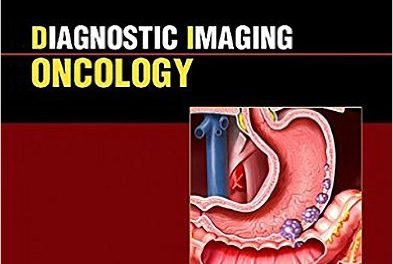 Authors: Eric P. Widmaier, Hershell Raff, and Kevin T. Strang
Authors: Eric P. Widmaier, Hershell Raff, and Kevin T. Strang
Publisher: McGraw-Hill Publishing – 707 pages
Book Review by: Nano Khilnani
This book has several companion websites that help you learn anatomy and physiology. The first of them is www.aprevealed.com where you can get content and customize it to your course, including vivid animations, cadaver specimens, and lab-practical quizzing.
To benefit the most from the use of this book, we urge you to use its other online resources as well, which are found on: www.mhhe.com/widmaier13
McGraw-Hill Connect Plus Anatomy & Physiology is an interactive learning platform that provides a customizable, assignable eBook, auto-graded assignments, an adaptive diagnostic tool, lecture capture, access to instructor resources, and powerful reporting – all in an easy-to-use interface. Learn more at: www.mcgrawhillconnect.com
A fourth website useful to you is: www.mhlearnsmart.com. McGraw-Hill LearnSmart is an adaptive diagnostic tool that constantly assesses student knowledge of course material. Sophisticated diagnostics adapt to each student’s individual knowledge base, and vary the questions to determine what the student knows, doesn’t know, knows but has forgotten, and how to best improve their knowledge level. Students actively learn required course concepts, and instructors can access specific LearnSmart reports to monitor progress.
McGraw-Hill also provides you LearnSmart Labs for this book, which is a world-class super-adaptive technology. It is a must-see, outcomes-based lab simulation. It assesses a student’s knowledge and adaptively corrects deficiencies, allowing the student to learn faster and retain more knowledge with greater success.
Some of the other teaching and learning supplements that will help instructors and students are:
- Test Bank – written by the textbook authors, this computerized test bank uses testing software to quickly create customized exams for this text This user-friendly program allows instructors to search for questions by topic or format, edit existing questions, or add new ones, and scramble questions for multiple versions of the same test.
- Instructor’s Manual – is available on the text website: www.mhhe.com/widmaier13. It contains teaching/learning objectives, sample lecture outlines, and the answers to Review Questions for each chapter.
- The Best of Both Worlds – McGraw-Hill and Blackboard.® These two entities have teamed up to make your learning easier. Blackboard users will find the single sign-on and deep integration of ConnectPlus within their Blackboard course an invaluable benefit. If your school is not using Blackboard, go to www.domorenow.com to learn more.
The best way we can provide you an overview of the contents of this large book and the numerous topics it covers is to give you the names of its chapters, which are:
- Homeostasis: A Framework for Human Physiology
- Chemical Composition of the Body
- Cellular Structure, Proteins, and Metabolism
- Movement of Molecules Across Cell Membranes
- Control of Cells by Chemical Messengers
- Neuronal Signaling and the Structure of the Nervous System
- Sensory Physiology
- Consciousness, the Brain, and Behavior
- Muscle
- Control of Body Movement
- The Endocrine System
- Cardiovascular Physiology
- Respiratory Physiology
- The Kidneys and Regular of Water and Inorganic Ions
- The Digestion and Absorption of Food
- Regulation of Organic Metabolism and Energy Balance
- Reproduction
- The Immune System
- Medical Physiology: Integration Using Clinical Cases
We urge you to go through the “Guided Tour Through a Chapter” (from page xvi through xix) to get the most from this book. In this tour, you will find the features that organize the materials offered in chapter, such:
- Chapter Outline
- General Principles of Physiology – NEW!
- Clinical Case Studies
- Summary Tables
- Physiological Inquiries
- Anatomy and Physiology Revealed (APR) Icon – NEW!
- Descriptive Art Style
- Flow Diagrams
- Uniform Color-Coded Illustrations
- Multilevel Perspective
- End of Section items: Summary, Review Questions, Key Terms, Clinical Terms
- End of Chapter items: Test Questions, General Principles Assessment, Quantitative and Thought Questions, Answers to Physiological Inquiries
This is an excellent book on anatomy and physiology which contains numerous study aids to enable you to learn in less time and more effectively. It is also unusually more beneficial for students than other texts because of the numerous online resources it provides. Its authors, working closely with the publisher, have made this very useful to students.
Authors:
Eric P. Widmaier received his PhD in Endocrinology in 1984 from the University of California at San Francisco. He went through postdoctoral training in endocrinology and physiology at Worcester Foundation for Experimental Biology and The Salk Institute in La Jolla, California. He is currently Professor of Biology at Boston University where he teaches Physiology.
Hershell Raff received his PhD in Environmental Physiology in 1981 from Johns Hopkins University and did postdoctoral training in Endocrinology at the University of California at San Francisco. He is now Professor of Medicine (Endocrinology, Metabolism and Clinical Nutrition) at the Medical College of Wisconsin and Director of the Endocrine Research Laboratory at Aurora St. Luke’s Medical Center.
Kevin T. Strang received his Master’s Degree in Zoology in 1988 and his PhD in Physiology in 1994 from the University of Wisconsin at Madison. He teaches a large undergraduate systems physiology course as well as first-year medical physiology in the UW-Madison School of Medicine and Public Health. He has twice been awarded the UW Medical Alumni Association’s Distinguished Teaching Award for Basic Sciences.







